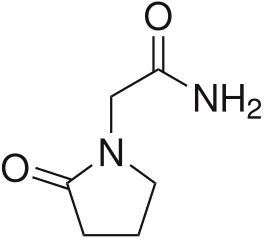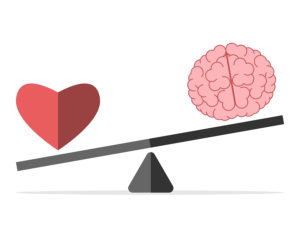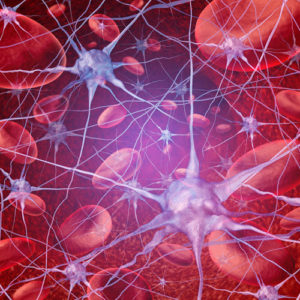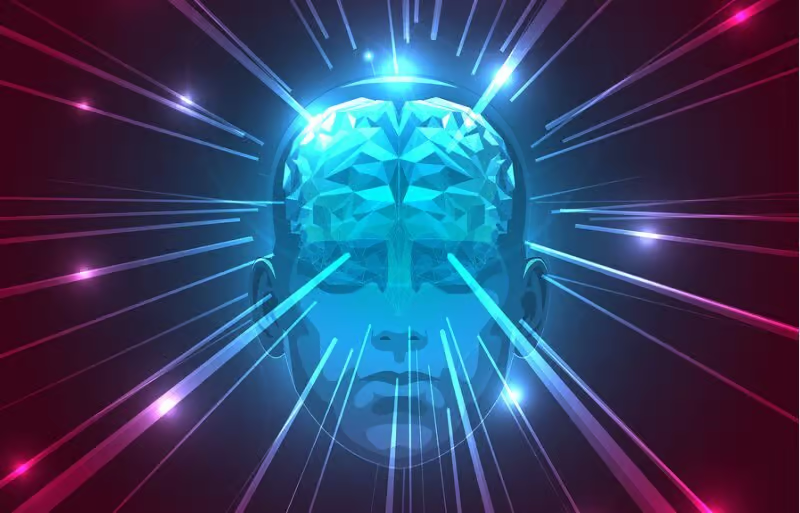Table of Contents
Piracetam (2-oxo-1-pyrrolidine-acetamide, Nootropil) is a water-soluble ampakine nootropic in the racetam-class of compounds.
Piracetam was first synthesized by Dr. Corneliu Giurgea at Belgian-based pharmaceutical company UCB Pharma in the 1964. Piracetam is considered the first true nootropic ever developed.
As a cyclic derivative of GABA, the drug Piracetam was first intended to be a calming type of drug for motion sickness. But in spite of its connection with GABA, Piracetam didn’t show any behavior associated with this calming neurotransmitter. And cannot directly affect GABA receptors.[i]
Instead, Dr. Giurgea discovered that Piracetam was able to boost cognition even in healthy people. The company launched this new ‘drug’ as ‘Nootropil’ in Europe in the early 1970’s. The success of Nootropil soon allowed UCB Pharma to expand its operations which led to many new pharmaceutical drugs.
Dr. Giurgea coined the term “nootropic” to describe this class of cognition-optimizing compounds.[ii] Nootropic was derived from the Greek words for “mind” (noos) and “towards” (tropein).
Piracetam is sold as a prescription drug (Nootropil and Lucetam) in Europe. In South America, Piracetam is sold under the names Noostan (Argentina), Breinox (Venezuela and Ecuador), and Nootropil (Mexico). Piracetam is also branded as Lucetam, Oikamid, Smart, Geratam, Biotropil, Neurobasal, Stimulan and Nocetan in countries around the world.
In the United States, Piracetam is sold as an OTC supplement as Piracetam and Nootropil.
Dozens of racetam derivatives have since been developed based on the original Piracetam. All synthetic compounds, racetams share a pyrrolidone nucleus.
Piracetam modulates AMPA receptors, and boosts the function of acetylcholine in the brain. A favorite racetam among the nootropics community. Neurohackers use Piracetam to boost cognitive function and learning and memory.
If you’re going to start experimenting with racetams, my recommendation at Nootropics Expert is to start with Piracetam. Because it works, it’s safe and it’s cheaper than all the other nootropics in the racetam-family.
Piracetam helps:
- Inflammation: Piracetam is a potent analgesic (anti-pain). This analgesic effect is related to inhibition of inflammatory markers including IL-1β. And the prevention of reduced glutathione, ferric reducing ability and free radical scavenging[iii]
- Neurotransmitters: Piracetam potentiates the flow of, and increases the effect of acetylcholine (ACh) in the brain.[iv] And studies have shown it significantly improves learning and memory.[v]
- Cerebral Blood Flow: Randomized controlled trials show Piracetam increases blood flow in the brain.[vi] Better blood flow delivers more oxygen and nutrients to neurons improving cognition, memory and focus.
What is Piracetam?
Piracetam (2-oxo-1-pyrrolidine-acetamide, Nootropil) was the first in the racetam-family of nootropic compounds. It is a water-soluble ampakine nootropic. AMPA (α-amino-3-hydroxy-5-methyl-4-isoxazolepropionic) refers to one of three glutamate receptors in your brain.[vii]

Developed by a fellow of famous Russian physiologist Ivan Pavlov, Dr. Corneliu Giurgea first synthesized Piracetam at Belgian-based pharmaceutical company UCB Pharma in the 1964.
Since the discovery of Piracetam, dozens of piracetam like drugs (nootropics) have been created in the racetam-class of compounds. And all have a pyrrolidone nucleus at their core.
Piracetam is a cyclic derivative of GABA. But oddly enough, it doesn’t affect GABA receptors in the brain. Instead, Piracetam was found to modulate AMPA and NMDA receptors and improve the function of the neurotransmitter acetylcholine (ACh).
AMPA and NMDA receptors along with acetylcholine are associated with learning and memory.[viii] And when Piracetam is stacked with a choline supplement its effects are even more pronounced. Researchers have shown in hundreds of clinical studies that Piracetam therapy significantly improves learning and memory.
Piracetam also increases regional cerebral blood flow. Blood delivers oxygen and glucose needed for cellular metabolism, and helps carry away cellular waste. Critical for the highly optimized brain.
Piracetam is sold as a prescription drug in many countries around the world. In the United States, Piracetam is sold as an unregulated OTC research compound.
How does Piracetam work in the Brain?
Piracetam boosts brain health and function in several ways. But two in particular stand out.
- Piracetam modulates AMPA and NMDA receptors in the brain. And improves the flow of acetylcholine (ACh) and sensitivity and density of ACh receptors.[ix]
This German study conducted with lab mice showed the pharmacological properties of Piracetam treatment elevated NMDA receptor density. And normalized the way those receptors worked with L-Glutamate similar to that of a healthy brain.
Deficits at the level of NMDA receptors could be one of the mechanisms of action underlying age-related cognitive decline. Studies show that nootropics like piracetam might act in part by restoring age-related deficits of central muscarinic cholinergic receptor density. And the researchers concluded that Piracetam showed cognition-enhancing properties.[x]
This effect on NMDA receptor sites is directly related to our interest in using Piracetam for Long-Term Potentiation and the support of long-term memory formation.
Neuroplasticity is dependent on activation of NMDA receptors.[xi] And this neuroplasticity is at the heart of memory formation. Reviews of Piracetam used by neurohackers frequently report the return of long-lost memories. Further proof of the efficacy in using Piracetam to support learning and memory.
- Piracetam increases cerebral blood flow. Several studies have shown how Piracetam positively influences brain blood flow. Cerebral blood flow is critical for cognitive function and the highly optimized brain. Blood delivers oxygen and local cerebral glucose utilization needed for cellular metabolism, and helps carry away cellular waste.[xii]
Strokes can be caused by an interruption in cerebral blood flow. Starving parts of the brain of oxygen and glucose. This double-blind, placebo-controlled study was done with 24 stroke patients. One group received 2,400 mg of Piracetam twice daily, and the other a placebo.
Before treatment, both groups were comparable in performance during language tasks. The study found that Piracetam treatment improved recovery of various language functions. And this effect was attributed to increased blood circulation to areas of the brain related to language. The placebo group showed very little improvement in areas of language.[xiii]
How things go bad
As we get older, our brain chemistry and metabolism changes. And it seems these changes are affecting younger and younger people.
↓ Recall, reaction time and learning capacity declines
↓ ATP energy levels decline
↓ Density of AMPA and NMDA receptors decline
↓ Acetylcholine levels decline
↓ Cerebral blood flow declines
All of these changes are contributing factors to age-related cognitive decline. Early signs of these effects can be seen in poor decision-making, difficulty learning, and even recalling simple things like an important appointment.
But even if you’re not concerned with the signs of aging, Piracetam can help.
Piracetam benefits
Piracetam helps increase blood flow in the brain, improves oxygen levels, enhances glucose use in brain cells, maintains brain cell mitochondria and ATP synthesis.
Piracetam is also a potent modulator of AMPA-sensitive glutamate receptors in neurons. It increases the density of specific binding sites for AMPA in neuronal synapses.[xiv]
Glutamate is the primary excitatory neurotransmitter in your brain. This glutamate activity by Piracetam affects alertness, focus, attention, memory and learning. And one of the reasons why neurohackers consistently report that Piracetam improves mental performance and memory.
Piracetam increases high-affinity choline uptake (HACU) which is the process that occurs in cholinergic nerve endings and facilitates acetylcholine (ACh) formation. Boosting ACh with Piracetam produces a powerful effect on learning and memory.[xv]
Piracetam also boosts choline receptor density in the frontal cortex. The area of your brain used for working memory and decision-making.[xvi]
ATP energy is critical to your brain’s survival. Brain cells must produce all of their own ATP from glucose and oxygen. This brain energy carbohydrate metabolism depends on cerebral blood flow, oxygen uptake and glucose. Piracetam enhances this glucose utilization, and increases ATP synthesis within brain cell mitochondria.[xvii]
And Piracetam has analgesic (anti-pain) benefits. This anti-pain action is linked to Piracetam’s anti-inflammatory properties.[xviii] Inflammation can cause pain, and studies have shown Piracetam can have profound effect on pain.
And clinical research shows Piracetam may reduce the incidence of painful sickle cell disease crises in those suffering from sickle cell anemia.. But the research is limited and some studies dispute the clinical efficacy of using Piracetam for sickle cell anemia.
Piracetam boosts the use of acetylcholine so you should add a good choline source. Try Alpha GPC or CDP-Choline with Piracetam. And give your brain the choline it needs.
How does Piracetam feel?
Most neurohackers report a noticeable benefit from Piracetam after about 2 weeks. Consider that Piracetam is modulating your brain’s chemistry. And this change is unlikely to occur immediately.
Your brain needs some time to adjust to the new change in acetylcholine (ACh) levels and how it uses it. Increased cerebral blood flow takes a while to bring up levels of oxygen and nutrients. And for your neuronal cells to respond. Your mileage may vary depending on your own neuro-chemical makeup.
Many suggest starting with an ‘attack dose’ for the first 3-days. A 3,000 mg ‘attack dose’ of Piracetam for example to start with theoretically gets more of the supplement into your system right away. So it takes less time to build up before you start feeling the effects.
From there step down to a maintenance dose and vary the quantity until you find your own sweet spot.
Once you begin to notice the effects of Piracetam you’re likely to feel a mood boost, less social anxiety, heightened creativity, improved verbal fluency and better memory.
Piracetam does boost your brain’s use of acetylcholine. So you will likely find that adding a good choline source (Alpha GPC or CDP-Choline) to your Piracetam stack helps.
Piracetam Clinical Research
 We have plenty of evidence that Piracetam improves memory in animals and people who are suffering from many types of cognitive impairment. Keep in mind that most of the scientific research available for nootropics is done with sick people trying to get well.
We have plenty of evidence that Piracetam improves memory in animals and people who are suffering from many types of cognitive impairment. Keep in mind that most of the scientific research available for nootropics is done with sick people trying to get well.
The return on investment for research at institutions and universities comes from treating diseases. And not from helping ordinary biohackers like us trying to get a competitive advantage at work or in school.
We can however extrapolate the findings from these studies and learn if and how something like Piracetam can help our memory and cognition. Once-in-awhile someone does take the time to conduct such a study on healthy people. Like this one done with normal, healthy volunteers.
Researchers gave this healthy group of participants four 400 mg capsules of Piracetam 3-times per day (4,800 mg total) for 14 days. No effects on memory were observed after 7 days during this experiment. But after 14 days verbal learning had significantly increased.[xix]
Piracetam Improves Cognition
Researchers in Belgium (where Piracetam originated) conducted an analysis of 19 double-blind, placebo-controlled studies done with patients suffering dementia or cognitive disorders and who took Piracetam.
The results of this meta-analysis demonstrated the difference between people who used Piracetam or used a placebo. The end result of this analysis provided compelling evidence for the usefulness of Piracetam in a diverse group of people with cognitive impairment and for boosting brain function.[xx]
Several studies and user reviews have shown that Piracetam dosage makes a difference. And unlike some other nootropics where you start at a lower dose and work your way up, with Piracetam I recommend you start at a higher suggested dose.
This study in Germany with 78 elderly patients showed that there was a significant difference in cognition improvement while dosing Piracetam at 1,600 mg 3-times per day. There was no difference in cognition with patients who received 800 mg 3-times per day.[xxi] Dosage matters when using Piracetam.
Piracetam Enhances ATP Production
Piracetam is used around the world to treat cognitive impairment in aging, brain injuries, dementia and Alzheimer’s Disease. Several studies show that Piracetam enhances ATP production, mitochondrial membranes and neurite outgrowth in neurons.
In this study, scientists investigated the effects of Piracetam on mitochondrial function. Human brain cells were treated with Piracetam under normal conditions and under conditions imitating aging and damage by ROS (reactive oxygen species). And with cells representing early-stage Alzheimer’s Disease.
The cells representing Alzheimer’s conditions showed impaired mitochondrial function under baseline conditions. Piracetam was able to restore this impairment in cells and shift mitochondrial function back to normal.
The researchers showed that the metabolic enhancer Piracetam is able to repair mitochondria in those with mild Alzheimer’s and return cell function back to normal.[xxii]
Piracetam for the Treatment of Tardive Dyskinesia
Tardive Dyskinesia is a serious, and often disabling movement disorder often caused by meds that are used to block dopamine receptors.
There is no current standard treatment for this disorder in mainstream medicine.
But this is where nootropics come to the rescue once again. A study conducted at Be’er Sheva Mental Health Center at Ben-Gurion University in Israel with 40 patients suffering with Tardive Dyskinesia.
Study participants were randomly assigned either 4,800 mg/day of Piracetam or a placebo for 4 weeks. The study authors concluded at the end of the study “Piracetam appears to be effective in reducing symptoms of tardive dyskinesia.”
Piracetam recommended dosage
Recommended Piracetam dosage is 1,600 mg 3-times per day. One Piracetam dose in the morning, and one in the early afternoon, and one later in the afternoon.
You will likely want to start with an ‘attack dose’ when you’re first starting out with Piracetam. Refer to the “How does Piracetam feel?” section of this article for more on ‘attack doses’.
Dosing Piracetam varies widely between neurohackers. Experimenting and finding the dose where you experience the most benefit is key. You may find a lower dose works well for you. Or you may find you need to increase your dose even more. Dosing Piracetam is directly related to your own unique neurochemistry.
Piracetam Side Effects
Piracetam is non-toxic. So is considered well-tolerated and safe.
As with many of the racetams, Piracetam can cause headaches because it boosts the use of acetylcholine in your brain. Choline supplements like Alpha GPC or CDP-Choline can help you avoid this side effect.
Many neurohackers find that stacking Piracetam with a choline supplement boosts the effect with improved memory and cognition. And this is supported in several research studies.[xxiii]
Where to buy Piracetam
Piracetam is sold in tablet, capsule and powder form. Tablets and capsules are usually 800 mg each.
I recommend Click for Cosmic Nootropic – Piracetam or Click for Science.bio- Piracetam who sell Piracetam as a “research” compound. It is sold to be used in an academic laboratory research setting. They go on to state “nothing we sell is intended for nor is it manufactured for diagnostic or therapeutic purposes in humans.”
In Europe, Asia, South America and some other countries around the world, Piracetam is a prescription drug. And sold under many different brand names (including Nootropil). Refer to the Introduction of this article for some of these brand names.
Nootropics Expert Recommendation
Piracetam 1,600 mg 3-times per day
 I recommend using Piracetam as a nootropic supplement.
I recommend using Piracetam as a nootropic supplement.
Your body does not make Piracetam on its own. So to get its benefits you must take it as a supplement.
If you’re going to start experimenting with racetams, our recommendation at Nootropics Expert is to start with Piracetam. Because it works, it’s safe and it’s cheaper than all the other nootropics in the racetam-family.
Piracetam is especially helpful for those suffering from most types of age-related cognitive decline.
Piracetam is also particularly useful to students and executives who want to enhance cognitive functioning, learning and memory.
You should use Piracetam with a good choline supplement like Alpha GPC or CDP-Choline. It helps boost neural acetylcholine, so demands the presence of more choline in your brain.
You can safely boost daily intake of Piracetam to 9,600 mg if needed. Studies have shown that Piracetam is completely non-toxic even at high doses. You may find however that a lower dose than our recommended amount works better for you.
I recommend Click for Cosmic Nootropic – Piracetam or Click for Science.bio- Piracetam









Join The Discussion - 219 comments
Wilbert
January 31, 2021
Hello david:
How long can I take piracetam for?
Should i cycle it?
David Tomen
February 3, 2021
Wilbert, most don’t cycle Piracetam because it takes awhile to build in your system (unlike the other racetams). Cycling would bring zero benefit and worst case you would likely be missing it on the days you don’t use it.
Vincent
February 19, 2021
Couple of questions- how much cdp choline should I start with when dosing 500mg piracetam? I am starting on a low dose to be conservative and then increase gradually. Also, cdp choline has a long half life, do you believe taking everyday could have a negative compound effect of too much choline?
Alpha gpc even on low doses of 50-60mg gives me insta brain fog.
David Tomen
February 19, 2021
Vincent, you’ll need to experiment and find out what works for you. A standard dose of CDP-Choline is 300 mg twice per day. But that may be too much for you.
Vincent
February 19, 2021
Thank you! I’ll use the 8:1 ratio to begin with and see from there how things go.
Katherine
January 28, 2021
Hello, David.
I’ve taken Piracetam with wonderful results for over a decade, yet am now baffled that I am unable to find it available at most nootropics providers. I’ve tried Noopept as an alternative but my experience with it is not as favorable as Piracetam…
I’m wondering what is the reason for the lack of availablity, and more importantly, I’d be grateful for recommended resources that currently have Piracetam available.
Thanks!
Katherine
David Tomen
January 29, 2021
Katherine, probably because of COVID. Many supplement companies are having problems with ingredients supply, packaging supply, etc.
You may be able to get Piracetam from here: https://science.bio/product/piracetam-powder/ref/613/
Aly Ray
January 14, 2021
Hey David Thanks so much for your article. This is great information!
I’ve used piracetam on and off for years and LOVE the effects and boosts its able to provide. I tried making a switch to noopept but ended up moving back to piracetam. My piracetam dosage is 4800mg/d split between multiple doses throughout the day.
One question- I take an ATP supplement (Stance Supplements Power ATP). It provides more oxygen, I feel like my breaths are deeper, and I typically feel an energizing or “up” effect sans jitteriness. Your article describes piracetam improving/restoring ATP levels, but I’m wondering if there are any contraindications OR benefits of the stack. After reading your article I’ll also be adding choline to the mix.
What are your thoughts here?
David Tomen
January 14, 2021
Aly, there shouldn’t any contraindication between the two. Anything to support ATP synthesis is good. But definitely use a choline supplement each time you use Piracetam. The benefits are much more noticeable.
Rifat Al-chadirji
December 14, 2020
Hi David,
Is it true that saturating one’s system with Piracetam and then using it consistently at a maintenance dose causes the other racetams like Pramiracetam and Coluracetam to work better?
Thank you!
David Tomen
December 14, 2020
Rifat, I can’t imagine why that would be true. But if you try it let us know your experience please.
Rica
October 22, 2020
Hi David
I’ve seen you comment about being cautious using Piracetam on younger people. I have a 6yr old and I’d like to use Piracetam for ADHD symptoms. In my research I found this study. https://pubmed.ncbi.nlm.nih.gov/15071842/. What are your thoughts on this? Can you tell me what I should be aware of if using it on a child?
Thank you
David Tomen
October 23, 2020
Rica, that study is proof that Piracetam has been used successfully with children as young as 6. You would need to use a study like that to determine a safe dosage. But one thing to keep in mind is higher than normal dosages are often used during these studies because they are short term. And the researchers are looking for an effect in the short term. So that translates into start with a much lower dose.
The other thing to look for is ‘how the nootropic works’ in the brain. Does it “change” anything? That’s where you’d need to be careful that you don’t start messing with normal development. If all the nootropic did was potentiate the effectiveness of a receptor for example is one thing. But if it increase the number of receptors then you’re getting into change territory.
Rica
November 1, 2020
You made an excellent point and something to think about “change”. With a 6 yr old whose body is rapidly changing I feel very reluctant to give meds or heavy supplements.
I will hold off on Piracetam for now. Thank you again for the help.
Brian Morenze Peiris
August 20, 2020
Hey David,
Thank you for sharing your knowledge!
Is it necessary to take breaks from taking Piracetam form time to time? So you don’t develop a dependency? And if so, would it be wise to stop it abruptly, or would you recommend, slowly phasing it out and restating later with an attack dose?
Thak you in advance.
David Tomen
August 21, 2020
Brain, I’ve never heard of someone developing a tolerance to Piracetam. There are only one or two racetams where that could be an issue.
You should not experience any difficulty abruptly stopping Piracetam. Review the mechanism of action with this nootropic and I think you’ll understand why. The only thing you may experience is slipping back to a state of cognition that is not as good as when you’re using Piracetam.
It’s unlikely you’ll slide all the way back to before you started. But you may notice a difference. While inconvenient, it’s not life threatening nor uncomfortable.
Brian Morenze Peiris
August 23, 2020
Gotcha! Thank you Sir!
steve
November 26, 2019
According to a recent study in JAMA:
Although approved as a prescription drug in Europe, piracetam is not approved in the United States for any conditions,and can cause a slew of psychological side effects, including anxiety, depression and insomnia, according to the new study, published today (Nov. 25) in the journal JAMA Internal Medicine.
https://www.livescience.com/brain-boosting-supplements-contain-unapproved-drug.html
Perhaps you are being irresponsible in promoting piracetam.
A lot of unknowns here.
David Tomen
November 27, 2019
Steve, that particular piece has been copied and posted by at least 6 – 8 different sites over the last couple of weeks. But please keep in mind that I am not “promoting” Piracetam. I’m reporting on what it is, where it comes from, why it is used, side effects, and dosage recommendations if you decide to try it.
It’s entirely your responsibility as is everyone else who visits Nootropics Expert to decide what to use and what to avoid. The information is here and backed by clinical studies so you can make wise choices.
The ‘authorities’ as well as mainstream medicine advises against ALL dietary supplements. Because they have not been “approved by the FDA”. So you have a choice to believe what the drugs companies say. Or the research and what thousands of clinical studies and millions of users have to report.
steve
November 27, 2019
Hi David,
Thank you for your reply. I appreciate what you are saying about personal responsibility. It is as you say up to each one of us.
Multi-vitamins, fish oil, ginko and other such supplements are very helpful in many situations, and the fact that the FDA or drug companies don’t approve is no reason to stop taking them if appropriate for the individual.
However, piracetam specifically, is not approved as a “drug”, not even talking at all about its status as a supplement. It is approved as a drug in Europe.
Also the side effects listed in my previous post were based on a specific JAMA study published recently and I believe are important data.
These side effects are specific, explicit and shown to be real in the JAMA study. Though not all people will suffer such side effects, they are real.
The study also pointed out that some brands of piracetam suggest taking amounts per day which go beyond even the perscription limits for piracetam as a drug (in the EU). This is also important to consider.
As you simply want to give people data and therefore an informed choice, these data from the JAMA should be of interest to you and your readers, I think.
Thank you for your time and attention
David Tomen
November 28, 2019
Steve, of course there are side effects with this racetam as there are with every single nootropic I’ve reviewed so far. Including all of the vitamins, minerals, amino acids, antioxidants and others.
I absolutely agree that nothing should be in a capsule or supplement container that is not clearly stated on the bottle or package label. Anyone ‘sneaking’ something into a supplement should be put out of business for all kinds of reasons.
But did you know that certain nootropics we take for granted here in the USA are prescription drugs in other countries? You cannot buy Alpha GPC in certain European and Middle Eastern countries because it is only available as a prescription drug.
I don’t know how many people die every year from prescription drug reactions because the headlines are overwhelmed with news from opiate deaths. But the number is staggering. And I don’t seem to recall a single death reported from someone using Piracetam.
steve
November 28, 2019
Thank you David. I appreciate you being open to discussing this.
God bless you!
Steve
Anonymous
November 23, 2019
Hi David,
Does Piracetam has negative effects on young developing brain (under 30)? Or any pre-caution when taking Piracetam for anyone under 30? (Possibly anything similar to what Modafinil do to the developing brain in long term)
Thanks.
David Tomen
November 24, 2019
I’d be careful with Piracetam if you are younger than 21 years. The racetams are far safer to use even by younger people than prescription meds like Modafinil.
Ahmed
March 9, 2021
Hi David, can you clarify what exactly do you mean by “I’d be very careful” in this context?
For instance, I’m a 19-year-old who has had problems with motivation/concentration/ADD his whole life. and I currently take:
A multi-vitamin
Omega3
Sulbutiamine 400mg/day
Ginkgo Biloba 260mg/day
L-carnitine 1000mg/day
Alpha Lipoic Acid 300mg/day
(I eat a lot of Eggs for the Choline, since I can’t find a choline supplement where I live)
That being said, With this stack, should I NOT take the recommended 1600mg 3x/day dosage of Piracetam that is recommended, given my age?
if so, what dosage would you recommend?
and if I should change anything with the rest of my stack.
Much appreciated.
David Tomen
March 11, 2021
Ahmed, the human brain continues to develop into your twenties. Like the rest of your body it’s creating new neural networks and fleshing out each segment responsible for various functions. This natural process is not something to be messed with or interrupted because the consequences are not predictable.
That said, the supplements you are using are natural and you normally get them from food or a herb. All you’re doing is “supplementing” what you may not be getting from food.
The one thing that you’re missing in your stack and is important for the ADD brain is something to increase dopamine. I suggest adding L-Tyrosine to boost dopamine.